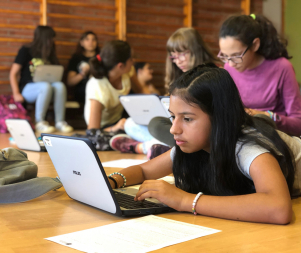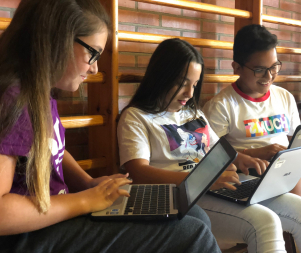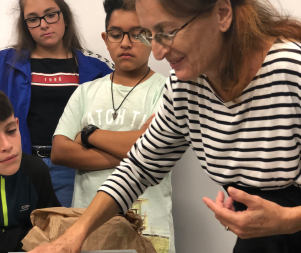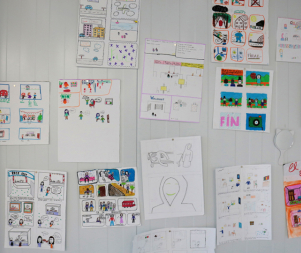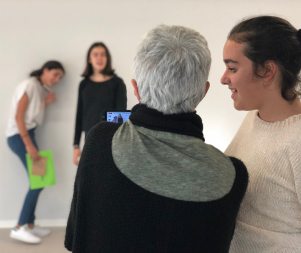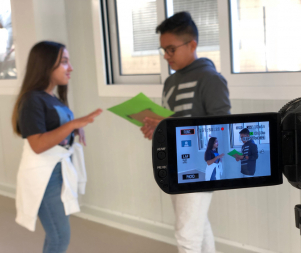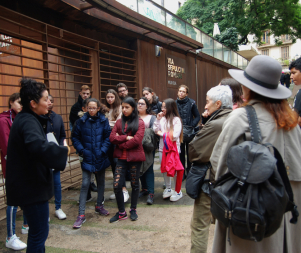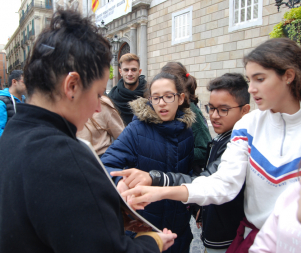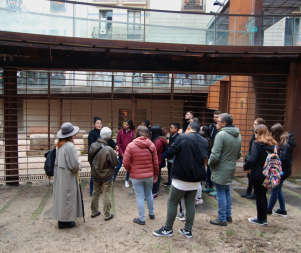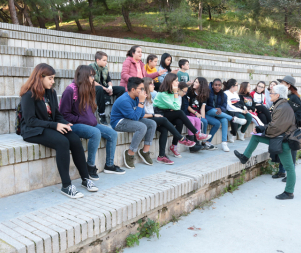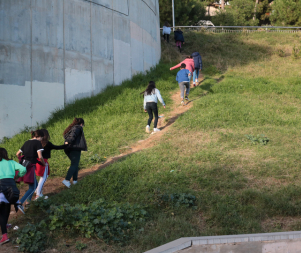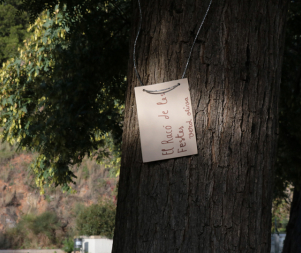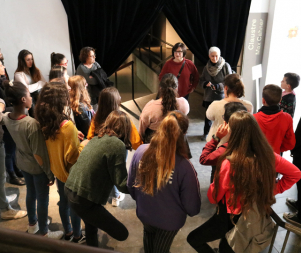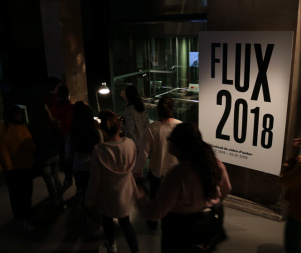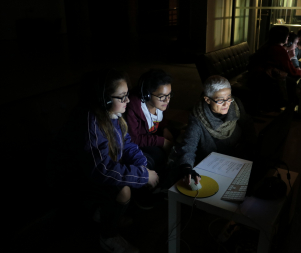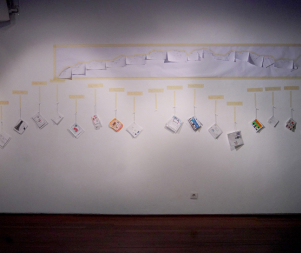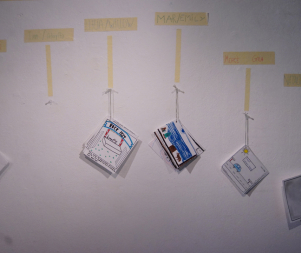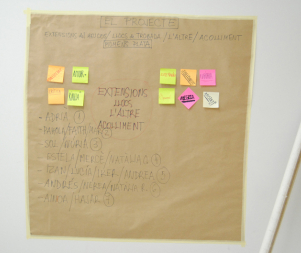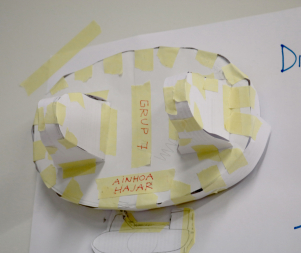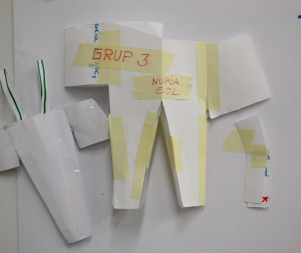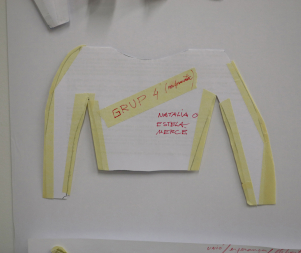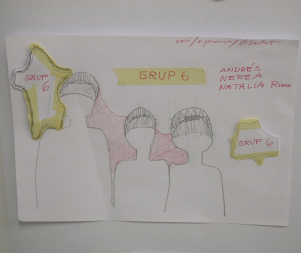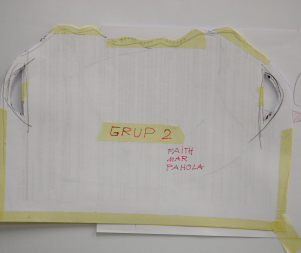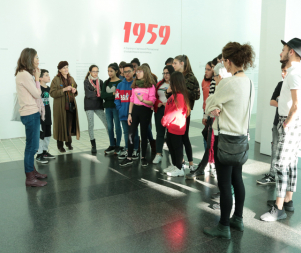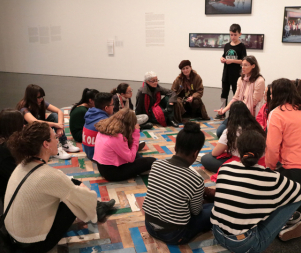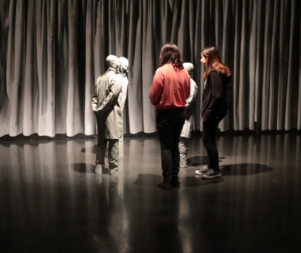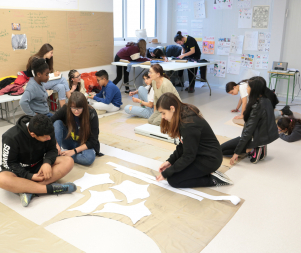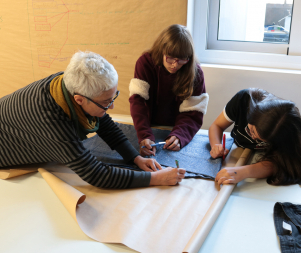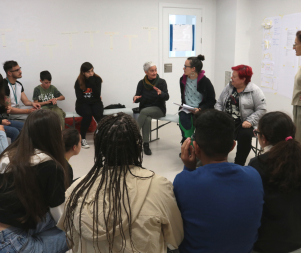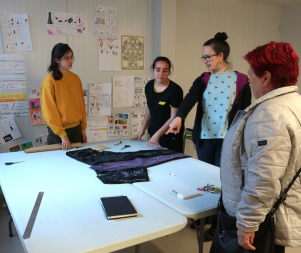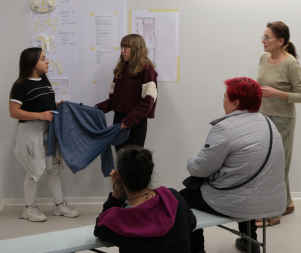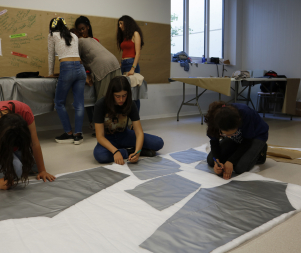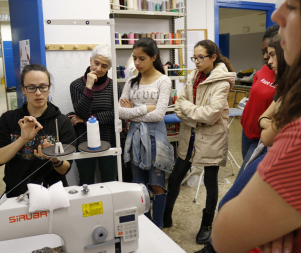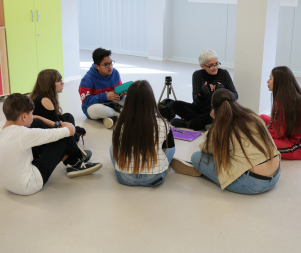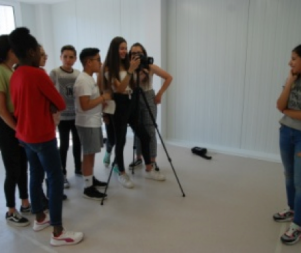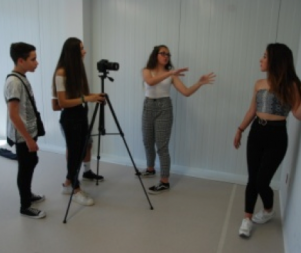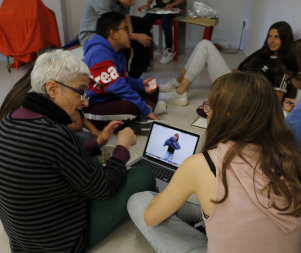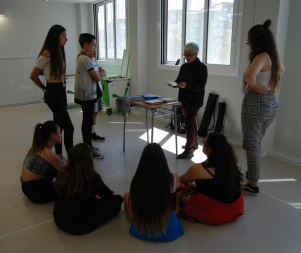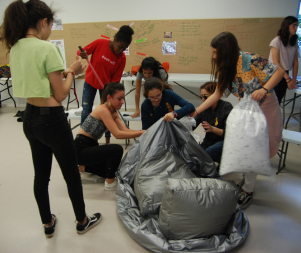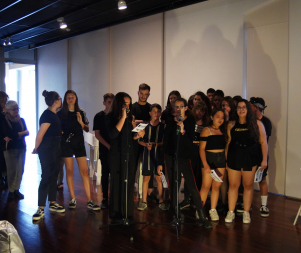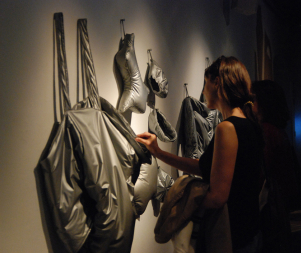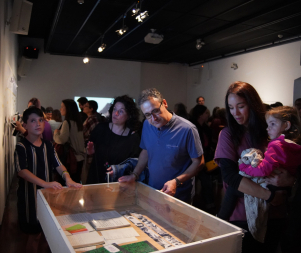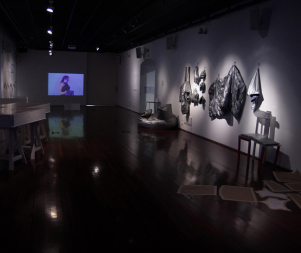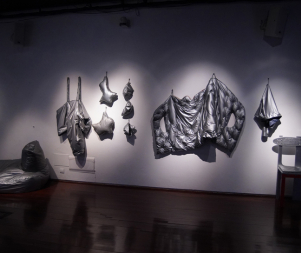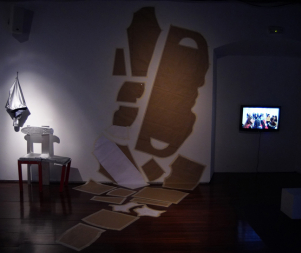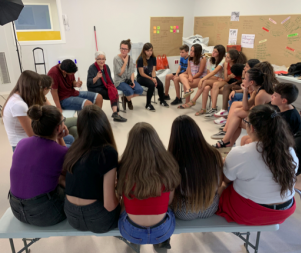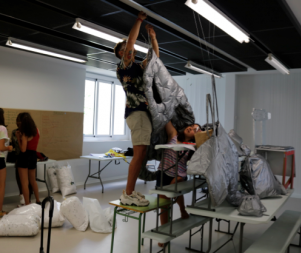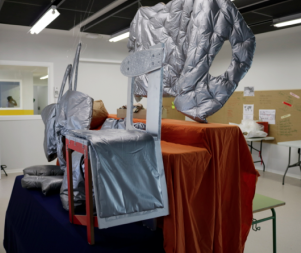- 14th EDITION 2022 / 2023
- 13th EDITION 2021 / 2022
- 12th EDITION 2020 / 2021
- 11th EDITION 2019 / 2020
- 10th EDITION 2018 / 2019
- 9th EDITION 2017 / 2018
- 8th EDITION 2016 / 2017
- 7th EDITION 2015 / 2016
- 6th EDITION 2014 / 2015
- 5th EDITION 2013 / 2014
- 4th EDITION 2012 / 2013
- 3rd EDITION 2011 / 2012
- 2nd EDITION 2010 / 2011
- 1st EDITION 2009 / 2010
Nora Ancarola and Marga Ximénez IN RESiDENCE at the School Antaviana
Getting to know the two creators: initial introduction to their work
The first contact between Nora Ancarola and Marga Ximénez and the students was by correspondence. In fact, the two creators made a small audio-visual presentation piece which they sent to the school. Based on this video, an initial investigation was made of their works and careers, to share issues and ways of doing contemporary art, as well as questions concerning the various disciplines their projects entailed.
Creating heteronyms
Using the ideas commented on with the creators, the students began a work of discovery and creation based on otherness, through the creation of heteronyms. Creating a character, asking what it was like and where it came from, imagining possible solutions to our own experiences... were the elements that shaped our emerging illustrated scripts. In small groups, the students recorded short interviews with the heteronyms, to see and analyse their reactions and expressiveness.
Visit to the MUHBA
Research on the city was started at the same time as that investigation. Following the premise that cities were made up of many layers of stories and events, the students visited the Museu d’Història de la Ciutat to experience first-hand these different layers of Barcelona.
Silver times. Routes through the Les Roquetes neighbourhood
A route was created based on a selection of spaces in the neighbourhood that impacted and had a positive meaning for the group of students: the amphitheatre, Plaça de Salvador Puig Antich and the Torre Baró viewpoint. Each of these spaces, after a conversation, was assigned a new name, which was hung from a silver-coloured thread (as they were spaces representing experiences where we have enjoyed and shared good times).
Lead times [Heavy moments]. Routes through the Les Roquetes neighbourhood
Continuing with the exploration of the neighbourhood, based on spaces with more negative connotations. A second route was created through the Les Roquetes library and the tracks of La Guineueta. The same dynamic was created in each of these spaces, each of which was given a new name, this time with a grey-coloured thread referring to lead.
Trip to Arts Santa Mònica. Flux 2018
Nora Ancarola took part with an audio-visual piece in the Flux Festival 2018, held at Arts Santa Mònica. A guided tour was organised with her and the exhibition’s curator so that the students could see the whole project and find out about the creator’s work first hand. This approach enabled the students to better understand the concept of lead and silver present throughout the work.
Recap: beginning of the conception of the work
The second term began with students going over the joint work they had carried out in order to share the wishes, doubts and proposals of the group: the body, lighting, objects and recycled material were among the elements which, based on the work of the two creators, played a central role in the discussions.
In small groups, the student began work on the conception of the piece based on a heavy or "lead" situation, turning it into a "silver" one. This idea of transition towards silver would be the cornerstone to the entire work that would subsequently be carried out.
Family itineraries
The students went over stories of migrations. Using their own knowledge and the stories told to them by their families, the students mapped out the itineraries taken by their ancestors through the territory. Finally, using a method similar to the game 'consequences', the various journeys were brought together to make a single, impossible journey, which was the sum of all the stories told in a single, continuous line.
Devising the pieces: models and work plan
Divided up into work groups and based on two key concepts, sharing with the other and the step from lead to silver, the students embarked on the creation process for the pieces. Five groups worked on textile pieces — one of which would film an action with the piece —, a sixth group would work on a chair with a cushion and a seventh group would be cross-cutting and document the other groups and portray their classmates.
Trip to MACBA
A visit to the MACBA collection was organised, where the students were given a tour devised specifically for the occasion with the museum’s educational service, of various works: Jana Sterback, Eugenia Balcells, Eulàlia Grau and Martha Rosler created plenty of dialogue in the room.
Production of the pieces. Patterns and meeting with the seamstresses
Based on the models, measurements were taken and the patterns of the textile pieces designed. First on paper and then with raw-cotton fabric. An important alliance was created for the production: the “Més amb menys” project's seamstresses, who attended a session at the school to get to know the group and the project.
Visit to meet the “Més amb menys” project's seamstresses
The seamstress workshop was located at the Les Roquetes Residents’ Association headquarters, a few metres from the school. Various visits were organised for the students to find out about the workshop, learn to sew using a sewing machine and to monitor the production.
Cross-cutting group’s photos
At the same time, the cross-cutting group took photo-portraits of their classmates. They used a neutral background and asked for a specific gesture typical of each one. The work would be a way of presenting the students within the exhibition.
Conclusion and completion
One of the groups was to activate its piece, a reversible jersey, through a performance they would record. At the same time, the seamstresses sent the pieces ready for display. One of the pieces was a pouffe that had to be refilled.
Presentation
A presentation was given on 21 May of our project, “Transformem el plom. Moments plata” at the Arts Santa Mònica's Sala Balcó. The presentation was attended by a large number of family members, classmates, teachers and other people from the world of culture and education.
Installation of the pieces at the school
To conclude the residence, a joint session was organised at the school for reflection and to install the pieces, so that they would on display for the other students the following year.

